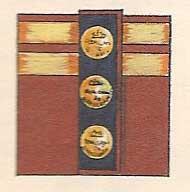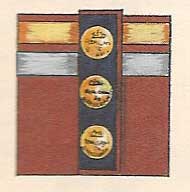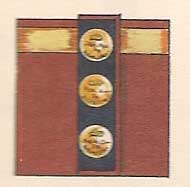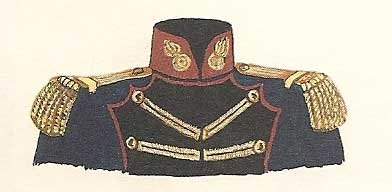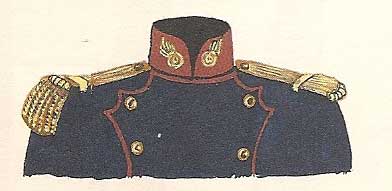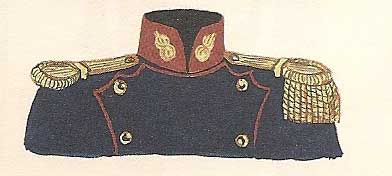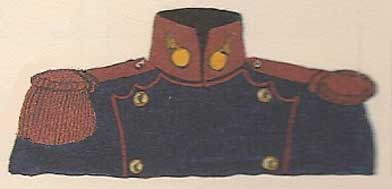|
Spanish Officer and NCO rank distinctionsThis is a rough guide to the Spanish Officer and NCO rank distinctions used during the Peninsular War & Napoleonic Wars from 1802/1803 until 1814. Spanish units can be divided in yellow metal units and white metal units. This is determined by the button colour and determined whether the rank distinctions were of gold or silver. The exception to this was the rank of battalion or squadron commander (created in July 1810) which combined gold and silver lace on the cuffs regardless of button colour. Spanish units had a facing colour which even determined the colour of the epaulettes worn by Sergeants.
Notes: Field grade officers are sometimes shown wearing two button-colour epaulettes as well as the lace cuff stripes listed. A "counter-epaulette" (with no fringe) was sometimes worn on the opposite shoulder of those who wore only a single epaulette. Officers on duty wore a gilt gorget in the centre of which was a silver badge bearing the royal arms. Unlike other armies of the period, even hussars officers wore epaulettes. Sergeants had the same weapons as the enlisted men. In the infantry they had a short sword but were otherwise armed with musket and bayonet, unlike the English army where 7-foot pikes (aka halberd) were still in use. Lace stripes on the upper sleeves in facing colour were awarded to NCOs and enlisted men for long service but were not a rank distinction. Sources
| ||||||||||||||||||||||||



